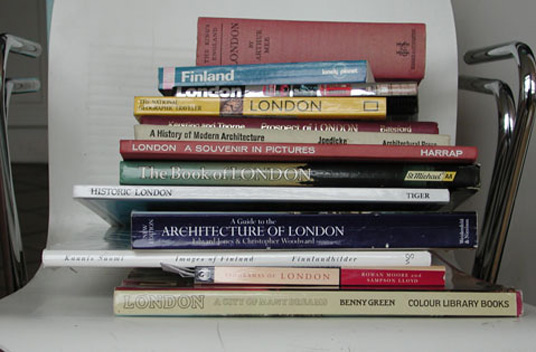 |
Abigail Reynolds |
|
City breaks statement
CITY + MAPPING + STATISTICS =
MOUNT FEAR The terrain of Mount Fear is generated by data sets
relating to the frequency and position of urban crimes. Precise
statistics provided by the police are digitally plotted and rendered
by a 3D modelling programme. Each individual incident adds to the
height of the model, forming a mountainous terrain. WORDS + MAPPING + TIME = FROZEN
SEA Using information contained in the Oxford English
Dictionary, the furniture in a study has been rearranged to map
out the relationships contained in the word ‘check’ In
The Frozen Sea, the audience sees a working study. Each object in
the study has been assigned a word. Large objects are older words,
small objects are newer words. The correlations of object volume
and word age are worked out on papers, collages and blackboards
all over the study. Objects are marked up with the words they denote
in the collaged elements only. CITY + MAPPING + TIME = CITY
BREAKS I have been looking at ways of mapping change and
I usually work from my experience of immersing myself for a long
time in a process and place - like the way I feel about risk and
my London environment or the Dictionary department of Oxford University. |
